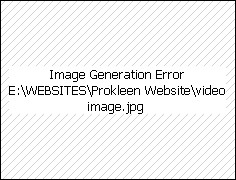Professional Carpet Cleaning Blog - Carpet Cleaning Warrington | Carpet Cleaning | Upholstery Cleaning |Warrington Carpet Cleaners | Affordable Carpet Cleaning Cost
Main menu
- Home
-
Our Services
-
Commercial Carpet Cleaning
- Altrincham Commercial Carpet Cleaners
- Birkenhead Commercial Carpet Cleaners
- Blackpool Commercial Carpet Cleaners
- Blackburn Commercial Carpet Cleaners
- Bolton Commercial Carpet Cleaners
- Chester Commercial Carpet Cleaners
- Ellesmere Port Commercial Carpet Cleaners
- Knutsford Commercial Carpet Cleaners
- Liverpool Commercial Carpet Cleaners
- Manchester Commercial Carpet Cleaners
- Middlewich Commercial Carpet Cleaners
- Northwich Commercial Carpet Cleaners
- Preston Commercial Carpet Cleaners
- Urmston Commercial Carpet Cleaners
- Rainhill Commercial Carpet Cleaners
- Runcorn Commercial Carpet Cleaners
- Sale Commercial Carpet Cleaners
- St Helens Commercial Carpet Cleaners
- Stockport Commercial Carpet Cleaners
- Warrington Commercial Carpet Cleaners
- Widnes Commercial Carpet Cleaners
- Wigan Commercial Carpet Cleaners
-
Carpet Cleaning
- Alderly Edge Carpet Cleaner
- Altrincham Carpet Cleaning
- Ashton-In-Makerfield Carpet Cleaner
- Ashton-Under-Lyne Carpet Cleaner
- Astbury Carpet Cleaner
- Birkenhead Carpet Cleaner
- Blackpool Carpet Cleaning
- Bolton Carpet Cleaning
- Bradford Carpet Cleaning
- Brynn Carpet Cleaner
- Bredbury Carpet Cleaner
- Burscough Carpet Cleaner
- Bury Carpet Cleaner
- Congleton Carpet Cleaner
- Chelford Carpet Cleaner
- Chester Carpet Cleaning
- Childwall Carpet Cleaner
- Chorley Carpet Cleaner
- Delamere Carpet Cleaner
- Ellesmere Port Carpet Cleaner
- Formby Carpet Cleaner
- Garston Carpet Cleaner
- Golborne Carpet Cleaner
- Halifax Carpet Cleaning
- Halsall Carpet Cleaner
- Hawarden Carpet Cleaner
- Hindley Carpet Cleaner
- Horwich Carpet Cleaner
- Heywood Carpet Cleaner
- Kirkby Carpet Cleaner
- Knowsley Carpet Cleaner
- Knutsford Carpet Cleaning
- Leigh Carpet Cleaner
- Leyland Carpet Cleaner
- Liverpool Carpet Cleaning
- Macclesfield Carpet Cleaner
- Maghull Carpet Cleaner
- Manchester Carpet Cleaning
- Marple Carpet Cleaner
- Middlewich Carpet Cleaning
- Nantwich Carpet Cleaner
- Northwich Carpet Cleaning
- Oldham Carpet Cleaning
- Ormskirk Carpet Cleaner
- Poynton Carpet Cleaner
- Urmston Carpet Cleaning
- Rochdale Carpet Cleaner
- Rostherne Carpet Cleaner
- Rufford Carpet Cleaner
- Runcorn Carpet Cleaning
- Sale Carpet Cleaner
- Sandbach Carpet Cleaner
- Southport Carpet Cleaner
- Stockport Carpet Cleaner
- St helens Carpet Cleaning
- Standish Carpet Cleaner
- Tyldesley Carpet Cleaner
- Warrington Carpet Cleaning
- Westhoughton Carpet Cleaner
- Widnes Carpet Cleaning
- Wilmslow Carpet Cleaner
- Wigan Carpet Cleaning
- Upholstery Cleaning
- Tenancy Cleaning
- Tile & Grout Cleaning
- Hotel & Office Cleaning
-
Commercial Carpet Cleaning
- Carpet Cleaning Videos
- Contacts Us
- Carpet Cleaning Info
- Reviews & Links
- Carpet Cleaning Blog
Carpet Shampoo Methods
Tags: carpet, shampoo, carpet, cleaning, rotary, shampoo, carpet, cleaners
The theory in the shampoo method is to generate a lot of foam in the carpet, allow this foam to dry, have the resulting residue attract the soil, and vacuum up the residue and soil the next day.
Carpet shampoo products must have the following characteristics which dictate their ingredients:
Very high foam levels to reduce wetting.
Very stable foam.
High lubricity to reduce damage to the carpet fibers from the brushes.
Dry to a non-
Therefore, a carpet shampoo
Because of the resoiling problem, carpet shampoos will frequently also have an anti-
Because shampoos are actually very poor detergents and basically simply bury the dirt, they frequently also contain high levels of optical brighteners which take invisible ultraviolet light and convert it to visible light, thus making the carpet appear cleaner and brighter than it really is, for a while. It will eventually give the carpet a yellow cast and the yellow cannot be removed.
Two primary types of machines are used for this process:
Cylindrical Foam
Rotary Shampoo
The Cylindrical Foam Shampoo machine uses an air compressor to create dry foam before the foam is applied to the carpet and the carpet is then agitated with a revolving cylindrical brush which combs the foam through carpet pile. This method will leave dirt trapped in the carpet pile. Carpet must be thoroughly vacuumed before and after cleaning.
The Rotary Shampoo method uses an ordinary rotary floor machine (the same kind used for stripping wax), sprays shampoo onto the carpet from a dispensing tank, and a rotary brush whips the detergent to a foam. Most carpet mills and carpet fiber producers discourage the use of rotary brushes on carpet because of the potential damage that can occur. Overwetting is common with this method which can cause jute straining, shrinkage, and odor.
Shampoo methods are inferior due to poor cleaning plus resoiling problems. The Rotary Shampoo method can damage the carpet, especially cut pile (which is what most residential carpet is).